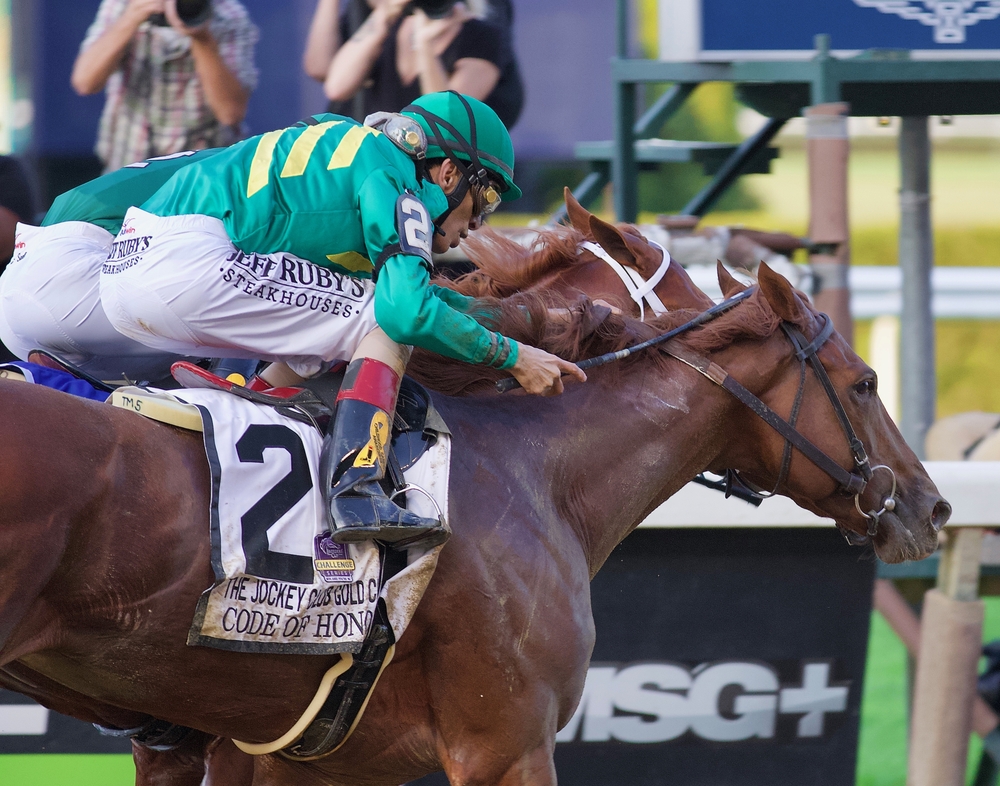Post position in horse racing refers to which numbered stall a horse is drawn in for a race. The post position is determined by a draw that is normally carried out by the racing authorities in which all horses are randomly drawn out and matched with a numbered stall. These draws normally take place behind closed doors, though some racecourses choose to do some draws live as part of the build-up for their biggest races.
Post position is something that many new punters fail to consider when they first start betting on horse racing. But you do this at your peril, as post positions can have a massive effect on the result of any horse race.
Need Help Beating the Bookies?
Our expert betting tipsters have been taking cash off the bookies since 2014! If you need a helping hand with winning then why not check them out?
Browse Our Tipsters
Punter’s Profit Pro
One of the Most Reliable and Consistent Horse Racing Tipsters at Betting Gods
Visit PROFILE
The Bookies Enemy
One of the Most Revered Tipsters on the Internet With 7 Years of Results
Visit PROFILEAre Post Positions As Important At All Racecourses?
No, the draw at some racecourses is much more important than at others. A perfect example of this in the United Kingdom is Chester Racecourse, where the tight turning track is often referred to as greyhound racing for horses. That’s because horses are turning left for much of the race, meaning the horses against the inside cover much less ground than the horses one or two-horse-widths away from the inside rail.
Some bends at racecourses are much less tight than at Chester and these are often referred to as sweeping bends. Some racecourses also have long straights while others have short straights, and it’s much easier for closers to make up ground on a long straight.
The other thing to note about post position is that not all races are run around a bend, as many races are run on straight courses. These are often sprint races over five and six furlongs but some racecourses host races of up to 10 furlongs on straight courses. In this scenario, it’s important to understand whether there is any track bias from on one side or the other or even down the middle, especially in big fields.
How Do I Find Out About Post Position Statistics?
Lots of specialist websites offer archives that you can browse to the effect of post positions in a race. Some will showcase all races run over each distance, while some will offer things such as 10-year-trends for individual races.
These trends can be very insightful and can help you decide whether a horse’s post position is a positive or negative. However, you also need to understand how a post position can affect horses with different types of run-style.
How Can Post Positions Affect Horses?
Not all racehorses have the same run-style, and this means post position can make a huge difference to the chances of any horse winning a race. For example, if a horse is a habitual front runner, it’s normally an advantage for them to have a draw near the inside rail if the race takes place around a bend. This means they can use their natural early speed to easily adopt a position at or near the front from the start.
If a front runner is drawn wider than ideal, he will normally have to use up more energy to get to the front as he’ll have to pass more horses on his inside to do so. Using this extra energy at the start of a race normally means they won’t have as much energy at the end of the race, making them vulnerable to a horse that has the run of the race from behind.
Horses that come from behind are often referred to as closers and the draw can be just as crucial to them as it is to front runners. They may not need to be drawn close to the rail, but they may not want to be drawn too wide. In horse races run around a bend, horses often race in Indian file or in small waves of two or three horses in a line.
For example, in a field of 18 runners, the horses may travel in six lines of three in the early stages of the race. If a closer is drawn too wide, he may find himself in the fifth or sixth wave of horses, and this may mean he has to start his run from too far back for it to be a winning one.
In this instance, a middle draw may allow him to sit in either the second, third, or fourth waves, which will be close enough to the pace for his final run to be a winning one.
A closer can also be drawn to near to the inside rail. As this type of horse doesn’t want to race near the front, he can often be shuffled back through the pack if the pace of the race is quite slow. This means he’ll have to use up even more energy to go around the horses in front of him, unless his jockey is willing to sit and potentially suffer waiting for a gap to appear up the rail.
Can I Use Post Position To My Advantage?
Post position is something you should consider when trying to work out how a horse race may be run. You can often go through the field and put a line through some horses that you think have been disadvantaged by the draw.
If the race you’re concentrating on is one of the later races on the card, it can also be a huge advantage to watch the earlier races to see if the statistics you’re using have been backed up by the earlier results. This can be especially important on races on a straight course, where the track bias can change from race to race, especially when the weather changes the ground.
The ground must also be considered when thinking about the advantages and disadvantages of post position. That’s because when the ground turns soft at some courses, jockeys may steer horses down a different part of the track, even as wide as the outside rail. Epsom is a typical example, as the jockeys tend to head to the stands rail when the ground rides soft or heavy.
Therefore, when you’re checking out post-position statistics, take a careful look at the ground conditions if winners have come from a variety of stalls, as you may see a pattern when the ground rides soft, etc.
We hope that’s answered your question about how is post position determined in horse racing. Post position is determined by a random draw, but it’s the importance of each horse’s post position than can be important when trying to pick winners.
It can take a lot of time to study post position trends, but don’t worry if you haven’t got that time, as we’ve got lots of professional punters that study post positions as part of their analysis of horse racing form. Even better, these are horse racing tipsters whose results prove how good they are – and they’ll be happy to try and help you make a long-term profit from horse racing.
Frequently Asked Questions
What is ‘post position’ in horse racing?
Post position in horse racing refers to the gate or stall number from which a horse starts the race. This position can significantly influence the outcome of the race, as certain positions may offer strategic advantages or disadvantages depending on the track layout and the distance of the race.
How is the post position determined in horse racing?
The post position in horse racing is determined through a draw process. This draw is typically conducted by the race organisers or the racing authority involved. During this draw, horses are randomly assigned their starting positions in the stalls or gates, ensuring that the allocation of post positions is fair and unbiased.
Why is the draw important in horse racing?
The draw in horse racing is crucial because it can impact a horse’s chances significantly. For example, on a track with sharp turns, a horse drawn on the inside might have a shorter distance to run. Conversely, being on the outside in a large field might mean a horse has to travel further, affecting its performance.
Can owners or trainers choose their horse’s post position?
No, owners and trainers cannot choose their horse’s post position. The positions are assigned purely by chance through the draw process to maintain fairness in racing competitions. However, trainers and owners must strategize based on the position drawn.
Are there any trends or statistics that show the impact of post positions on race outcomes?
Yes, statistical analyses often reveal trends about how well horses perform from certain post positions at different tracks. These statistics can vary widely depending on the specific conditions of each race, including track design and the number of horses competing. Bettors and enthusiasts often study these patterns to make informed decisions.
What happens if a horse is unable to start from its designated post position?
If a horse is unable to start from its designated post position due to a last-minute issue such as an injury or equipment problem, it may be withdrawn from the race. The remaining horses may then shift in the gate, or the affected stall might remain empty, depending on the rules of the specific racetrack.






Iwant to no the best draw on the strait lin
Horse from South Africa